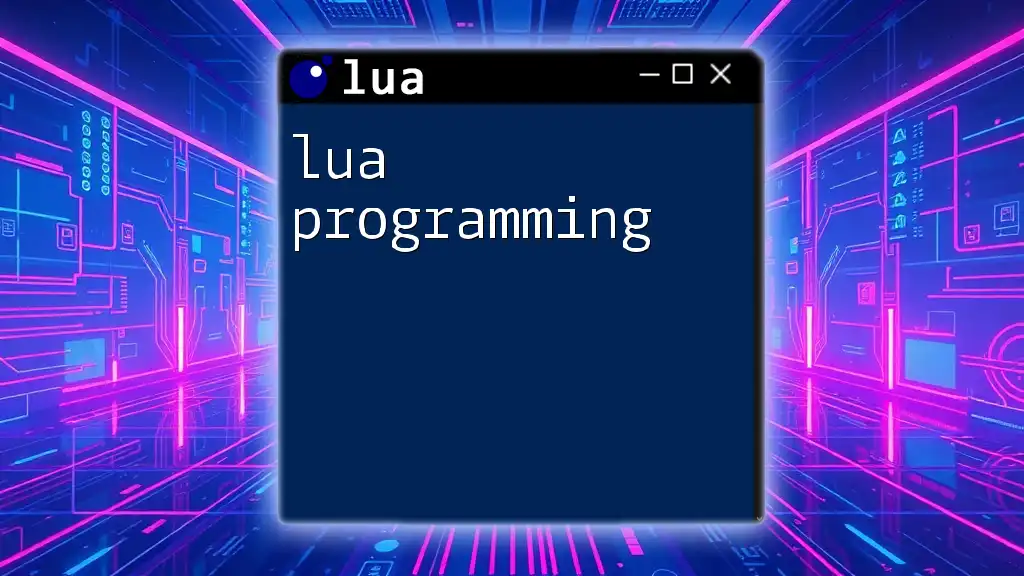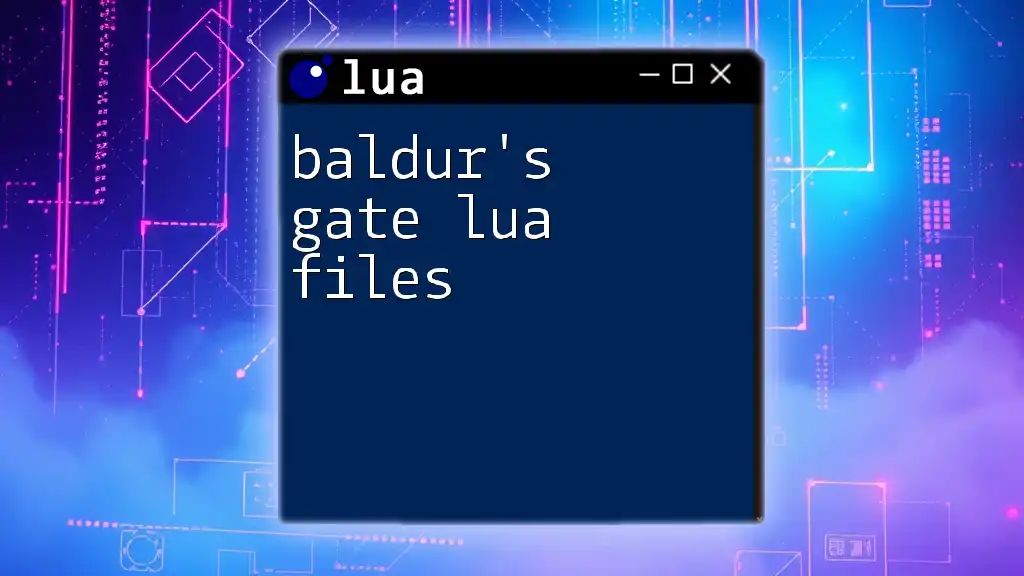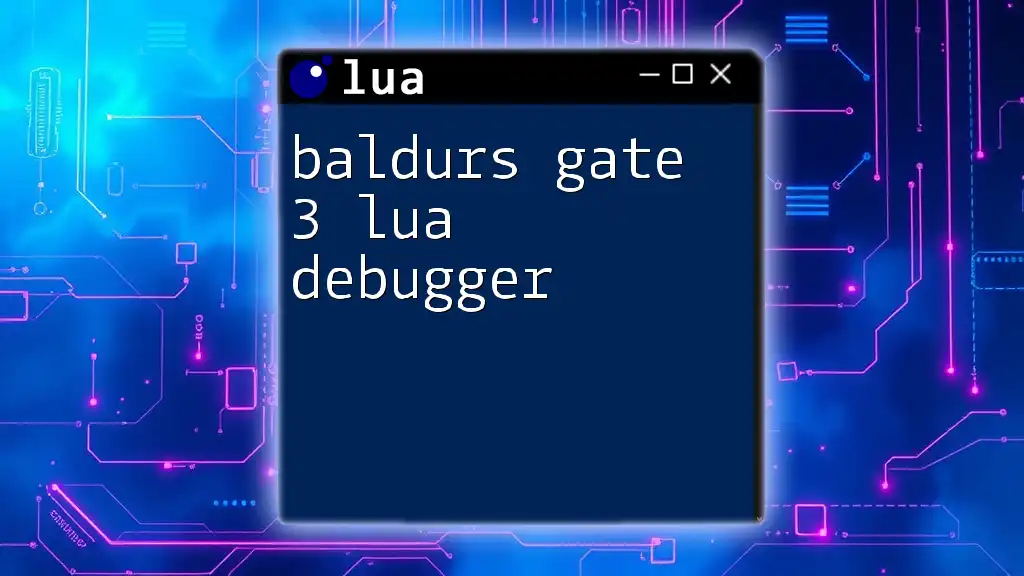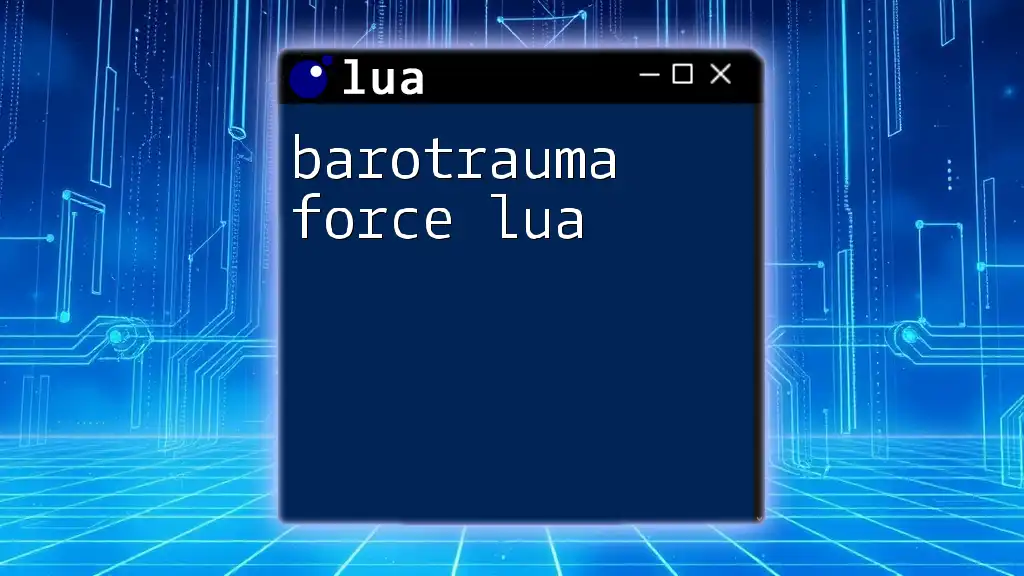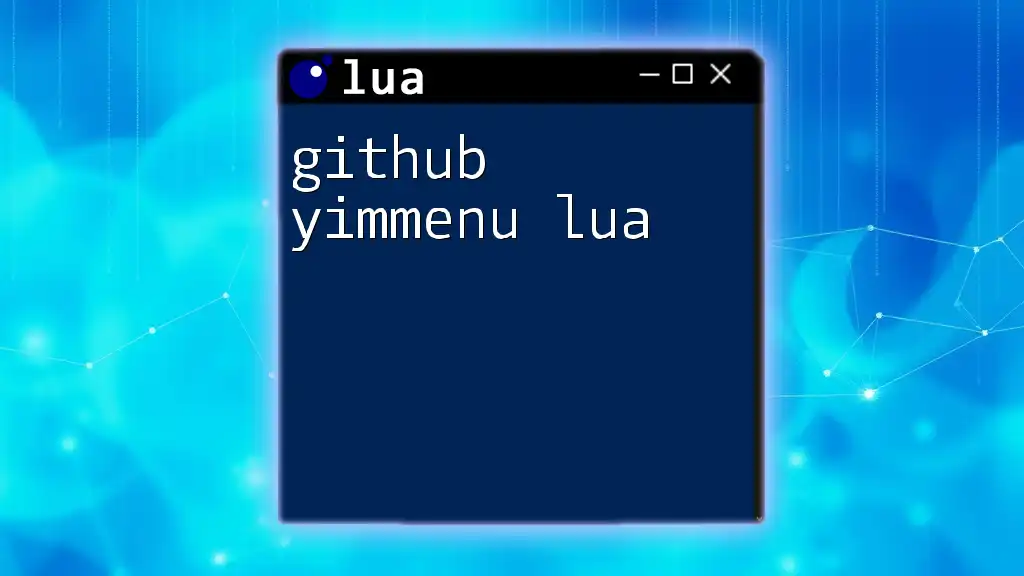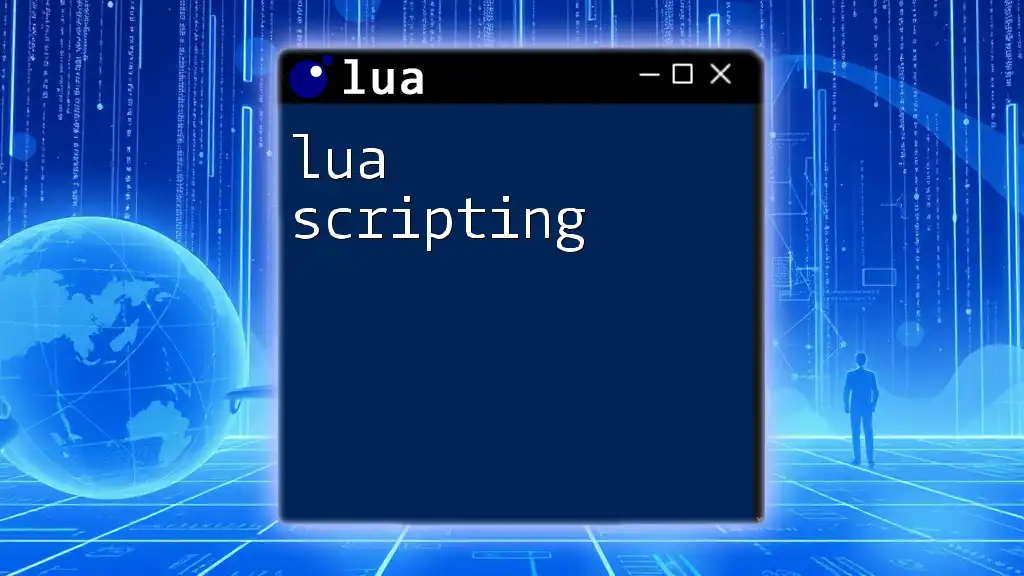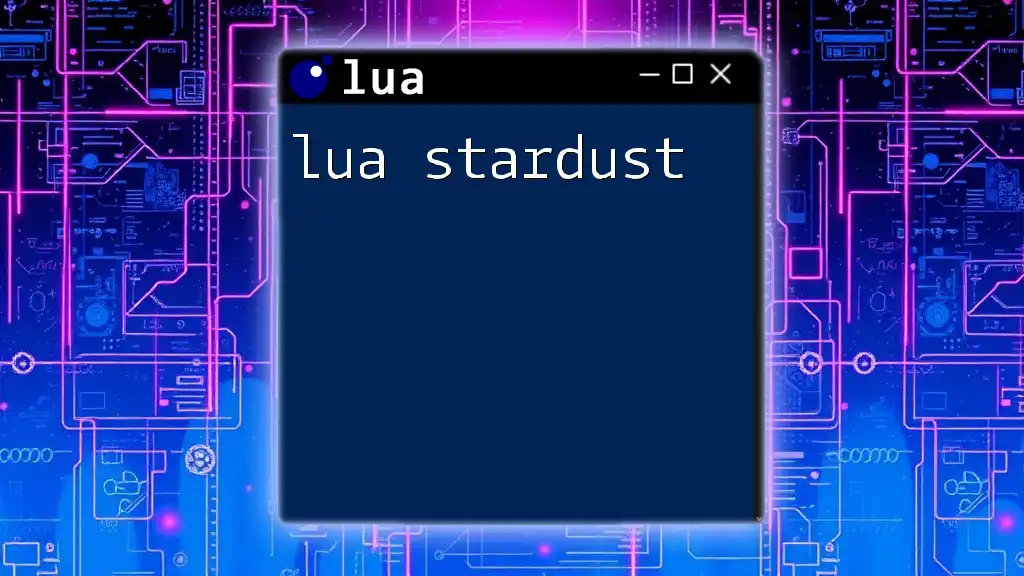Your tool may fall down in Lua due to improper handling of physics properties or constraints, leading to unintentional behavior in the simulation.
Here's an example of how to set proper properties for a physics object to help prevent it from falling:
local tool = Instance.new("Tool")
tool.Name = "MyTool"
tool.CanBeDropped = false -- Prevent the tool from being dropped
tool.Parent = game.Players.LocalPlayer.Backpack
local part = Instance.new("Part")
part.Size = Vector3.new(1, 1, 1)
part.Anchored = true -- Ensure the part doesn't fall
part.Parent = workspace
Understanding Lua as a Language
What is Lua?
Lua is a powerful, efficient, lightweight scripting language designed primarily for embedded use in applications. It is popular in game development, embedded systems, and scripting due to its simplicity and flexibility. This versatility allows it to interface seamlessly with C and C++, making it an appealing option for developers who need a dependable scripting solution.
Basic Lua Syntax
To understand why your tool might fall down in Lua, it’s crucial to grasp the basic syntax of the language. Lua employs straightforward syntax rules, where each command is usually a function call or an assignment.
Here’s a simple Lua command that prints a message:
print("Hello, World!")
This command demonstrates how to interact with the console, which is pivotal for debugging and testing purposes. Familiarity with such syntax will aid you in identifying errors in your script, ultimately guiding you towards solutions to your issues.
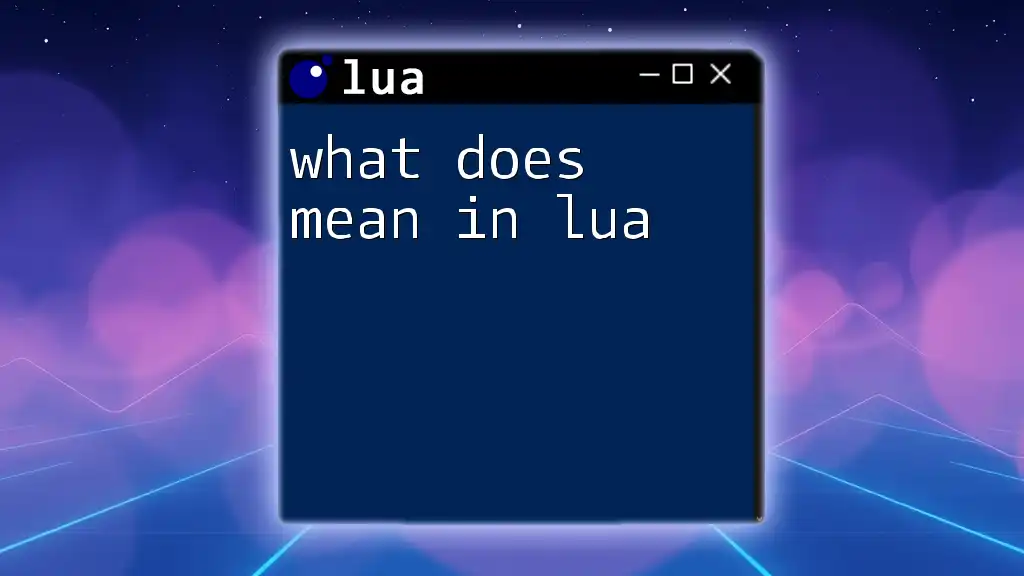
Analyzing Why Your Tool Falls Down
Common Reasons for Failure
Syntax Errors
Syntax errors are among the most frequent causes of failure in Lua programs. These errors occur when the code does not conform to the language's grammatical rules. Such mistakes may be minor, like missing punctuation.
Consider this example:
print("Hello, World!"
In this case, a closing parenthesis is missing, leading to a syntax error. Without addressing these issues, your script will not execute, resulting in failure.
Logic Errors
Logic errors can be more challenging to identify than syntax errors, as the code runs without crashing but produces incorrect results. These errors often arise from incorrect assumptions or flawed logic in conditions and loops.
For instance:
for i = 1, 10 do
if i = 5 then
print("i is five")
end
end
In this code, using the assignment operator (`=`) instead of the equality operator (`==`) introduces a logic error that will likely go unnoticed until you check the output. Correcting such errors is essential for ensuring that your tool performs as intended.
Runtime Errors
What is a Runtime Error?
Runtime errors occur when your code compiles successfully but encounters problems during execution. Unlike syntax or logic errors, runtime errors result from specific operations that cannot be completed.
Common Causes of Runtime Errors
Two common causes of runtime errors in Lua include accessing nil values and dividing by zero.
For example:
local x = nil
print(x + 1) -- Attempting to add a number to a nil value
In this situation, trying to add a number to a `nil` value will generate an error, causing your tool to fail unexpectedly. Understanding these error types can significantly aid in debugging and tool stability.
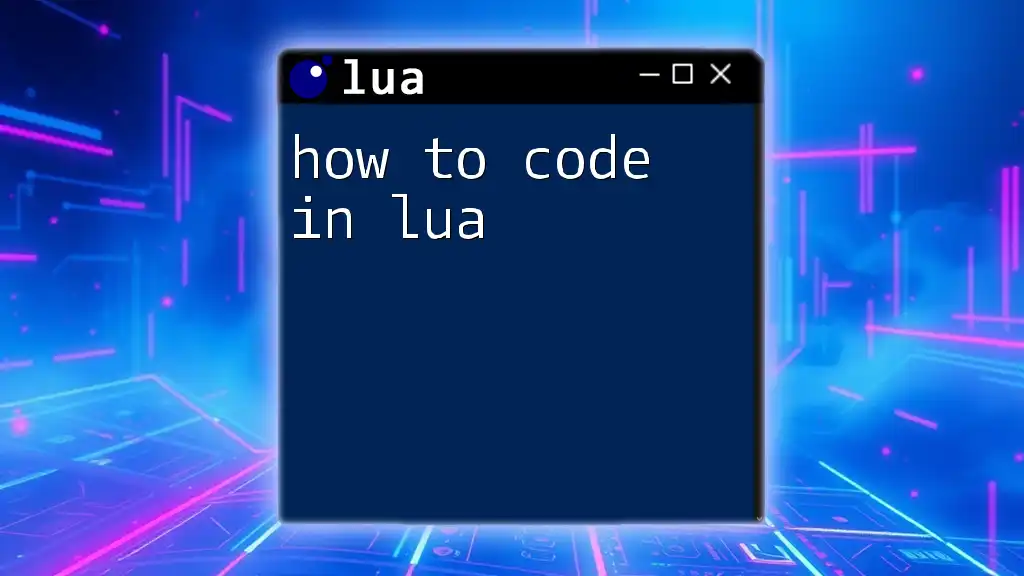
Tools and Techniques for Debugging in Lua
Using Print Statements
One of the simplest yet most effective debugging techniques in Lua is to use print statements. By inserting print commands at various points in your code, you can track variable values and flow of execution, allowing you to pinpoint where things go wrong.
For instance:
print("Starting the program...")
Adding this statement will confirm whether your program executes as expected up to that point. To enhance effectiveness, include concise messages indicating what part of the code is being executed.
Debugging Libraries
Lua includes built-in debugging libraries that provide more extensive debugging capabilities. The `debug` library, for instance, allows developers to inspect variable states, control execution flow, and handle errors gracefully.
To implement the `debug` library, you might use functions like `debug.traceback()`:
local status, err = pcall(function()
error("An error has occurred")
end)
if not status then
print(debug.traceback(err))
end
Using debugging libraries can provide deeper insights and control over your script’s execution, making it easier to troubleshoot and identify issues.

Best Practices for Ensuring Tool Stability
Write Clear and Clean Code
Maintaining code readability is paramount. Clean, well-organized code not only facilitates debugging but also aids in collaboration if you're working within a team. Practical strategies such as meaningful naming conventions and properly formatted functions will improve any Lua application’s clarity.
Consistent Testing
To prevent issues before they arise, adopting consistent testing practices is essential. Utilize unit tests to validate individual components and integration tests to verify that different parts of your application function together smoothly.
Here’s a simple unit test example:
function add(a, b)
return a + b
end
assert(add(2, 3) == 5) -- Verify the add function works correctly
Implementing such tests ensures that any changes to your codebase do not introduce new errors, maintaining tool reliability.
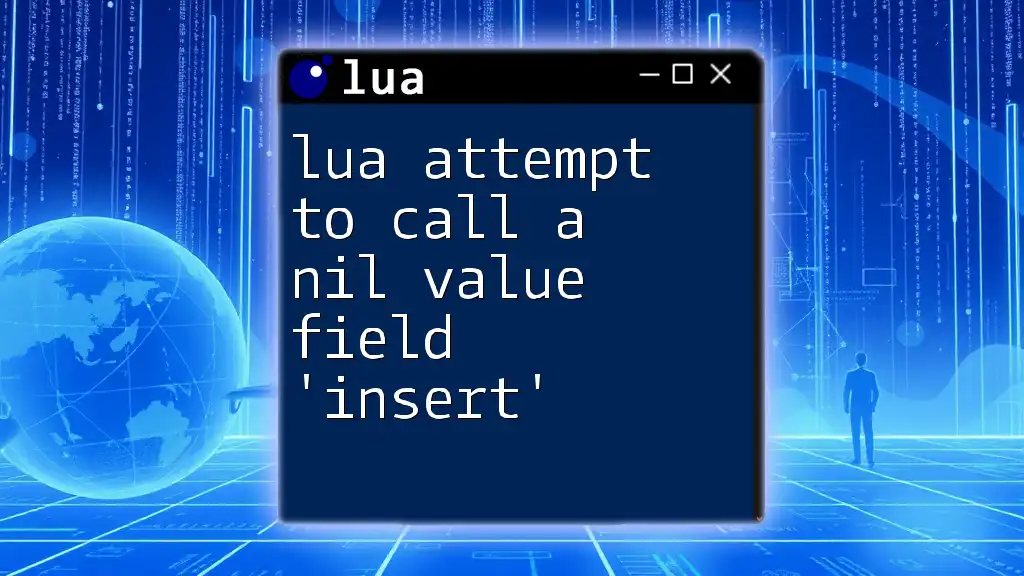
Real-World Scenarios
Case Study: A Failing Lua Tool
Consider a case where a Lua-based game tool failed due to a problematic loop structure. The tool was supposed to load levels in sequence but instead crashed when it tried to load an empty level. This occurred due to the absence of proper error checking that should have accounted for missing levels. Once the development team applied careful checks for nil values, the tool stabilized, illustrating the significance of thorough error management in scripts.
Learning from Mistakes
Failure often leads to the most valuable lessons. In the case of the Lua tool, the developers learned the importance of implementing defensive programming practices. By anticipating potential faults and validating inputs, they adapted their coding practices to ensure more resilient applications.

Conclusion
Understanding why my tool falls down in Lua hinges on a solid grasp of Lua’s structure, debugging methods, and best coding practices. By being mindful of common error types, utilizing effective debugging techniques, and adhering to best practices, you can significantly improve the stability and reliability of your Lua applications. Embrace the learning journey, and let your experience guide your development strategy.
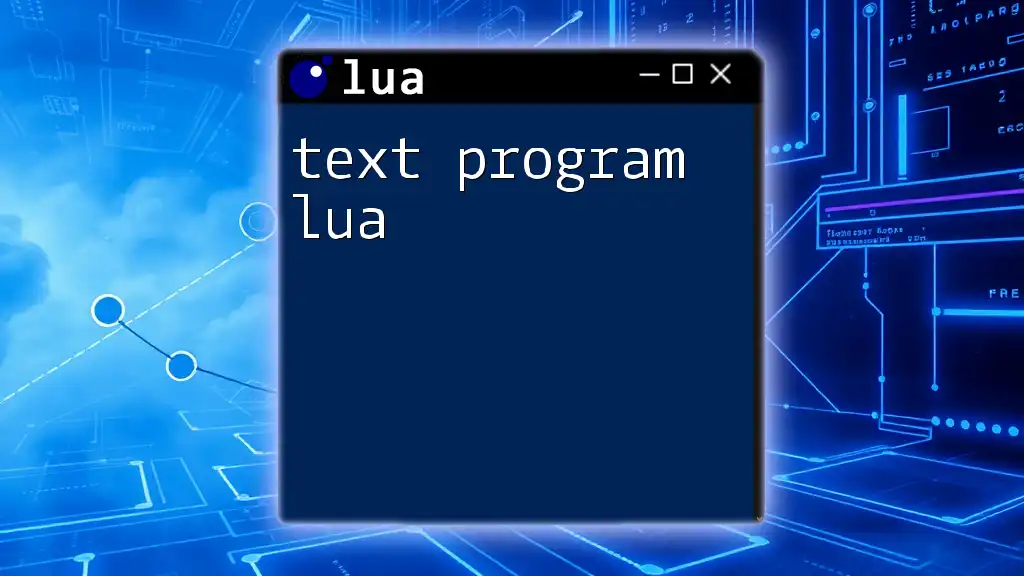
Additional Resources
Recommended Books and Online Courses
To deepen your understanding of Lua programming, explore resources such as introductory books on Lua and online courses that offer hands-on experience with the language.
Community Support Forums
Engaging with Lua community forums and discussion groups can provide invaluable support as you navigate complex coding challenges and share useful insights with fellow developers.








